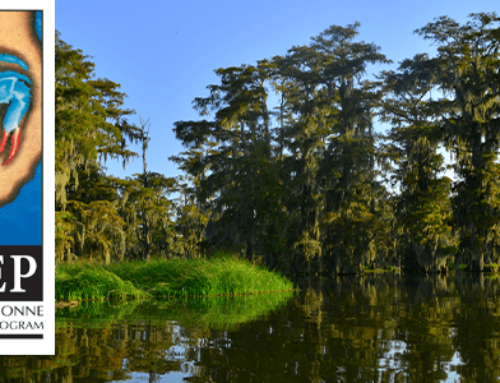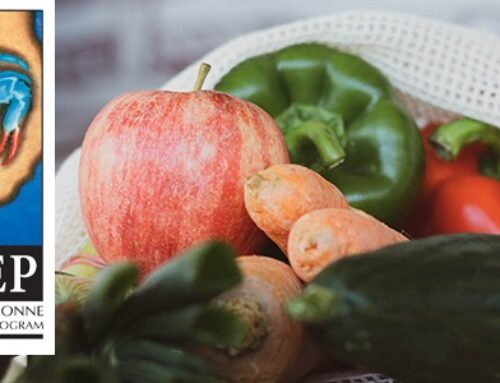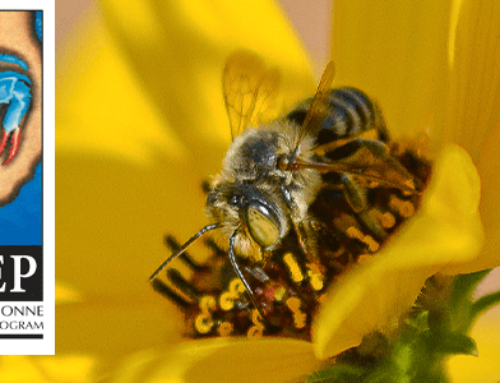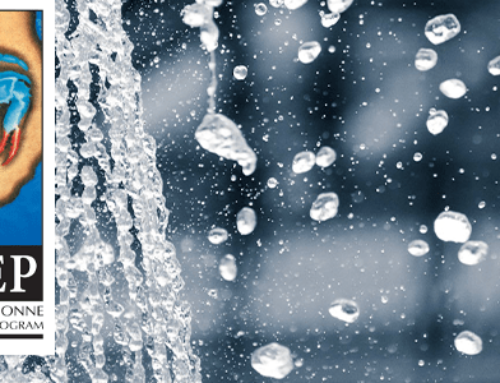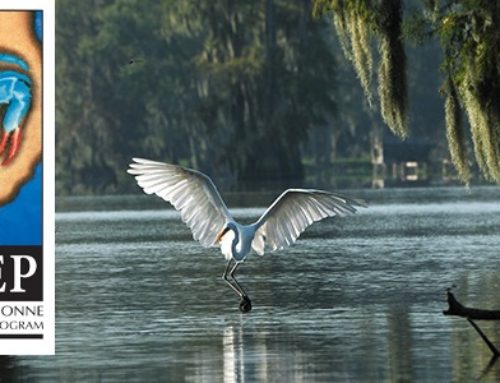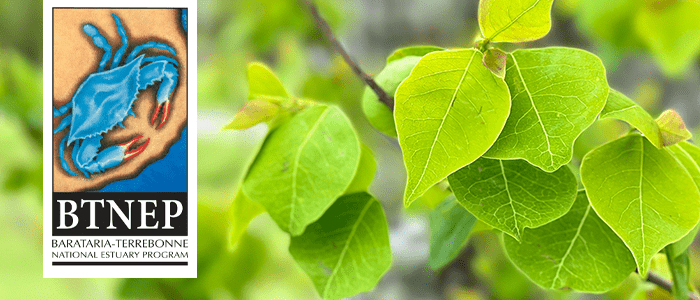
Hey, you don’t belong here!
Spring has officially arrived, and with it a new burst of plant, insect, and animal life! And while many believe that this is all good news for our environment, there are actually a few species that can be detrimental to our local ecosystem.
The Good Stuff: Why we need native plants
Our ecological system works essentially as a chain reaction — small organisms and plant matter sustain animal and vegetation, and animals and vegetation provide sustenance for human beings. A properly functioning ecosystem requires a delicate balance, with one of the most important factors being the vegetation that grows within an ecosystem.
When studying plants and vegetation within our estuary, we look at the diversity of plant life: some of which is native to our area, and others which are invasive. Native plants are those that naturally occur within a specific region. But why is it so important that the plants around us are native?
Native plants work in conjunction with the insects and pollinators that co-evolved with them, such as: caterpillars, butterflies, moths, bees, hummingbirds, and bats. In turn, the insects provide food for local birds, different native plants provide nectar and pollen for pollinators, and seeds and nuts feed local mammals.
In addition to keeping synergy within our ecosystem, native plants have multiple benefits:
-
Native plants often require much less maintenance than non-native plants.
-
Because native plants already thrive within our ecosystem, they don’t require profuse amounts of artificial fertilizers or chemical pesticides and herbicides.
-
Planting native plants also helps to conserve water as they are already adapted to local environmental conditions.
The Bad Stuff: The truth of invasive species
Non-native (exotic) plants and animals that are introduced into the local environment, either purposefully or accidentally, pose a serious threat to our estuary’s living resources.
Freed from the natural system of checks and balances in their native habitat, some exotic organisms thrive, and are able to reproduce explosively. They then invade their new environment, and their unchecked growth can cause significant problems for local creatures and habitats. The Barataria-Terrebonne Estuary is a rich ecological system. It has a mild climate and abundant rainfall, giving many exotics a greater chance to thrive and become invasive.
For example, in 2005 after Hurricane Katrina, many of the local trees and vegetation were destroyed over the 800 acres of forested wetlands within the Barataria Basin managed by the Woodlands Conservancy. Without the proper reseeding of the native species, invasive species were able to thrive — keeping the small native seedlings from growing. This invasion poses a major threat to migratory birds and the wildlife that depends on our native species.
While there are several invasive species posing a threat in Louisiana and within our estuary, the LSU Ag Center has identified a few of the worst offenders:
-
Chinese Tallow Tree: This tree, often referred to as a popcorn tree, chicken tree, soapberry tree, or a Florida aspen is native to Asia and was introduced to the U.S. in the 1700s. While its fast growth and foliage may seem appealing, this plant has the potential to dominate gaps in landscapes. At this time, the chinese tallow is considered the largest threat in Louisiana forests.
-
Chinese Privet: Introduced in the 1800s, this plant is extremely invasive within the Southeast United States as it’s very hard to kill, and spreads quickly within a variety of light and soil conditions. Its common use in landscaping provides a steady supply of seeds that are easily carried into forests by birds.
-
Cogon Grass: One of the newest threats to our area, cogon grass can grow almost anywhere and grows densely — easily taking over and displacing or even eliminating natives species in a particular area all together. Cogon easily reproduces, in one way via rhizomes shed from the plant, which easily mixes in with mud and dirt. The affected dirt often ends up on vehicles which allows the cogon grass rhizome to easily hitch hike from site to site.
Invasive species in our estuary aren’t just limited to plants and vegetation, wildlife is also a factor:
-
Nutria and Wild Hogs: In less than 100 years, nutria have managed to wreak havoc on our wetlands and coastal forests. As herbivores, they’ve made a large negative impact on vegetation. Similarly, wild hogs root for their food within our forests which disturbs the soil, seedlings, and roots. They also compete with local wildlife for food, and can carry and spread serious diseases. In addition, they pose a very serious threat to wildlife as they’re known to eat bird and reptile eggs, and newly hatched alligators, ground nesting birds, and turtles.
-
Apple Snails: If you’ve been near the water in Louisiana lately, you may have seen pink clusters clinging to trees. First documented in Louisiana in 2006, the apple snail is likely the result of irresponsible release from aquariums. As with other invasive species, they disrupt the natural flow of the ecosystem, consuming large amounts of plant materials and damaging habitats.
The Great News: How you can help!
-
Plant native plants: A great start to help balance our ecosystem is by choosing to plant native plants around your home or business. For a list of native trees, shrubs and flowering plants, check out our list.
-
Remove invasive species: If you’ve found invasive plants, you can help by removing them from your yard. Different species will require different removal methods depending on their size and location, check out our Managing Invasive Species Resident’s Guide for more information.
-
Remove apple snails: If you spot a cluster of pink eggs, you can remove them by hand and crush and destroy the eggs. While you can hand pick out adult apple snails, they’re often submerged and harder to find.
-
Hunt nutria and wild hogs: Those willing to hunt nutria can actually be paid for their removal! The Louisiana Department of Wildlife and Fisheries offers a nutria bounty of $6 per nutria tail. While there isn’t currently a bounty program in place for wild hogs, Louisiana does allow recreational hunting and trapping by private landowners.
Thank you for helping us protect our estuary!
Pictured Above: The Chinese Tallow Tree – one of the most common invasive species within our estuary.
Video: A video provided by BTNEP Water Quality Scientist Siva Nunna shows the highly invasive apple snail crawling down a street.


